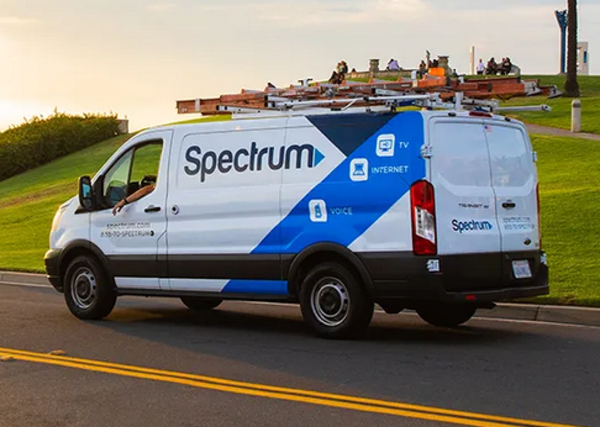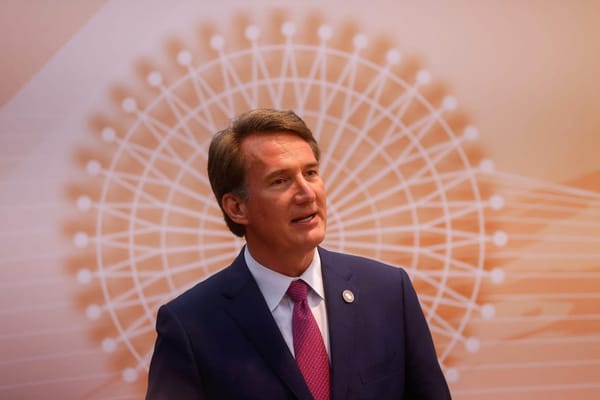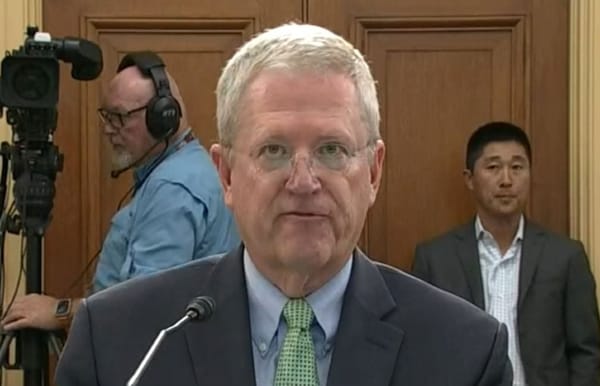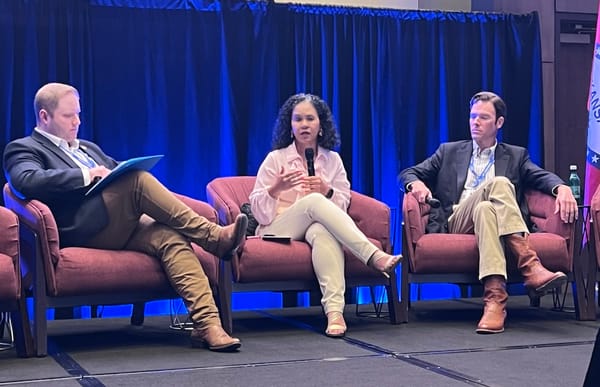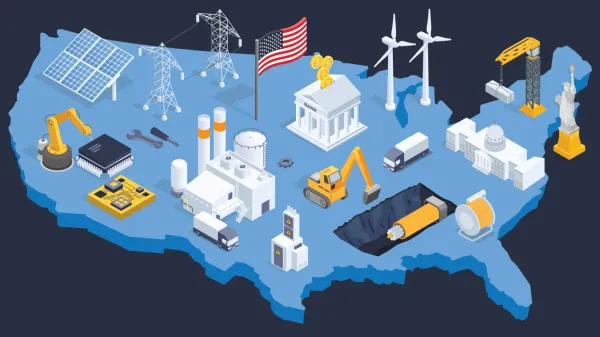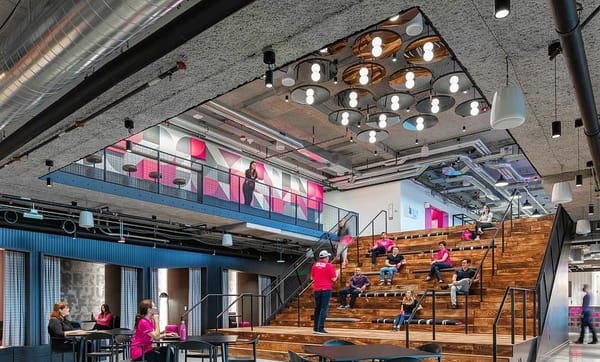12 Days: In 2023, a Rising Tide of Open Access Networks
Open access networks can be better understand through the 7-layered Open Systems Interconnection
Jericho Casper

December 28, 2023 – Open access networks in 2023 saw signs of change as major telecom players, including AT&T and T-Mobile, dipped their toes in the market – and smaller competitive and municipal players also continued strong.
The collaboration known as the Gigapower joint venture, forged between AT&T and private equity investment giant BlackRock in May, lent new legitimacy to the
open access approach, which separates the provision of broadband services from the network operator.
- On the Seventh Day of Broadband, my true love sent to me:
7 Layers to the Open Systems Interconnection Model and Open Access Networks
One-hundred-and 66 Billion Dollars of American Semiconductor Investment
56 States and Territorial Broadband Offices Implementing BEAD
4.8 Million Challenges to Broadband Coverage Data
$3.6 Billion Funds Remaining in the Affordable Connectivity Program
24 Reverse-Preemption Pole Attachment States (2023 edition)
And One Artificial General Intelligence
Another major operator venturing into the space is T-Mobile, which is set to become the primary tenant in a recently established $500 million partnership between Tillman FiberCo and private equity firm Northleaf Capital Partners.
The joint venture will allow T-Mobile to offer fiber Internet services to customers in markets across Arizona, Colorado, Florida, Nevada and Texas, all without investing a dime in the infrastructure.
In an industry long characterized by a preference for vertically-integrated ownership and control, incumbent providers are pivoting towards a model that emphasizes sharing networks.
What are open access network?
In an open access network, broadband infrastructure is owned by one entity, which can be either a public or a private entity and is often operated by a separate network operator. The network operator leases or shares the infrastructure with multiple retail internet service providers.
One can think of an open access network as a real-world implementation of the 7-layered Open Systems Interconnection model by the International Organization for Standardization. The OSI model is a broader construct for understanding the physical layer, data link layer, network layer, etc., in internet networking.
However, understanding the basics of the “layer cake” approach helps conceptualize the unique business and technical dimensions behind open access networks.
In an important contribution to this discussion, Broadband Breakfast’s Digital Infrastructure Investment Summit on December 5 demonstrated exactly how many forms open access networks can take. After a keynote presentation on the “Past and Future of Open Access Networks” by COS Systems Mikael Philipsson, a panel delved into diverse perspectives on such networks in the U.S.
The panel emphasized the differences and variations in several last-mile broadband deployments, including those of SiFi Networks, UTOPIA Fiber, Google Fiber, municipalities like the Eastern Shore of Virginia Broadband Authority and what panelists called the “utility lease model.”
In other sessions at the summit, panelists voice the belief that shared infrastructure is poised to become more common in broadband networks.
Regarding the AT&T-BlackRock joint venture of Gigapower, AT&T President of Broadband and Connectivity Initiatives Erin Scarborough highlighted scalability as a pivotal factor guiding AT&T’s choices, speaking at a Broadband Breakfast Live Online event in September.
Although Scarborough emphasized AT&T’s preference for the ownership model, she noted the agreement will allow the company to expand outside its traditional footprint.
“The model used by the joint venture will make sense to other ISPs, gain a lot of traction, and help break down historical biases telecos have had about not controlling all the assets,” predicted Gigapower CEO Bill Hogg during the event.
T-Mobile CEO Mike Sievert has also publicly acknowledged potential network capacity limitations for the company’s fixed wireless access service. At a conference in San Francisco in September, he said the open access model offers a “capital-light way to enter [the fiber] business and take advantage of [T-Mobile’s] embedded customer base and fantastic brand.”
Traditionally pioneered by municipalities
The large telecos appear to be displaying a newfound openness in their approaches to achieving growth. However, the open access model has historically been pioneered by municipalities, city-owned utilities, and cooperatives in the U.S.
Founded by a consortium of 11 Utah cities in 2004, UTOPIA Fiber expanded its fiber footprint across five cities in Utah this year. UTOPIA now offers its 10 Gigabit services to residents in 19 cities spanning four states. The government organization completely funds the open access builds and network operations through subscriber revenue.
The acceptance of open access might gain new traction through the Washington state legislature. This year, a bill would require all state funding from the federal Broadband Equity Access and Deployment program, nearly $1 billion, to be used to build open-access networks in the state. The bill did not pass in 2023, but 14 of Washington’s 28 Public Utility Districts are committed to deploying citywide open access networks to improve access to telecommunications services. Initiatives like the one to build countywide dark fiber led by the Lewis County PUD are happening across the state.
In Vermont, 22 communities partnered with Great Works Vermont Internet to build open access fiber that is expected to serve 30,000 locations.
A number of city’s collaborated with SiFi Networks this year to announce citywide open access fiber builds. The company set an ambitious goal to pass 40,000 homes per month in early 2023.
For example, the network in Placenta, California will see 20,000 homes, businesses and institutions served by open access, alongside 70,000 households in Oceanside, California. The company announced agreements to partner with Cleveland, Ohio, Saratoga Springs, New York, and Sugarland, Texas this year.
How will the momentum behind open access networks – from telco giants to scrappy innovators to persistent municipalities – play out in 2024?
See “The Twelve Days of Broadband” on Broadband Breakfast

- On the First Day of Broadband, my true love sent to me:
One Artificial General Intelligence - On the Second Day of Broadband, my true love sent to me:
24 Reverse-Preemption Pole Attachment States (2023 edition)
And One Artificial General Intelligence - On the Third Day of Broadband, my true love sent to me:
$3.6 Billion Funds Remaining in the Affordable Connectivity Program
24 Reverse-Preemption Pole Attachment States (2023 edition)
And One Artificial General Intelligence - On the Fourth Day of Broadband, my true love sent to me:
4.8 Million Challenges to Broadband Coverage Data
$3.6 Billion Funds Remaining in the Affordable Connectivity Program
24 Reverse-Preemption Pole Attachment States (2023 edition)
And One Artificial General Intelligence - On the Fifth Day of Broadband, my true love sent to me:
56 States and Territorial Broadband Offices Implementing BEAD
4.8 Million Challenges to Broadband Coverage Data
$3.6 Billion Funds Remaining in the Affordable Connectivity Program
24 Reverse-Preemption Pole Attachment States (2023 edition)
And One Artificial General Intelligence - On the Sixth Day of Broadband, my true love sent to me:
One-hundred-and 66 Billion Dollars of American Semiconductor Investment
56 States and Territorial Broadband Offices Implementing BEAD
4.8 Million Challenges to Broadband Coverage Data
$3.6 Billion Funds Remaining in the Affordable Connectivity Program
24 Reverse-Preemption Pole Attachment States (2023 edition)
And One Artificial General Intelligence - On the Seventh Day of Broadband, my true love sent to me:
7 Layers to the Open Systems Interconnection Model and Open Access Networks
One-hundred-and 66 Billion Dollars of American Semiconductor Investment
56 States and Territorial Broadband Offices Implementing BEAD
4.8 Million Challenges to Broadband Coverage Data
$3.6 Billion Funds Remaining in the Affordable Connectivity Program
24 Reverse-Preemption Pole Attachment States (2023 edition)
And One Artificial General Intelligence


